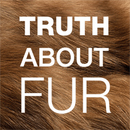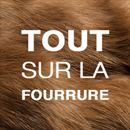October Fur News: Montana Trapping Under Threat
by Truth About Fur, voice of the North American fur tradeThe time of year is approaching when the main thing on many people’s minds is trapping. But we aren’t just talking…
Read More
The time of year is approaching when the main thing on many people’s minds is trapping. But we aren’t just talking…
Read More

The time of year is approaching when the main thing on many people's minds is trapping. But we aren't just talking about where and when to go trapping, or what to say to your boss if you want to skip work to go trapping. We're also talking about a very important Montana trapping ballot coming up on Nov. 8. If it passes, it will ban trapping on the state's public lands. Vote Clinton or vote Trump, that's your decision, but please make sure you vote NO on i-177. The campaign has been primarily funded by out-of-state animal rights groups. If they win this, they'll be one step closer to banning all trapping and hunting, and to their ultimate goal of making us all vegan. We're serious, that is their goal.
Times like this highlight the importance of supporting your fellow sportsmen, even if they don't partake in the same outdoor activities as you. Uniting sportsmen was the subject of our latest blog post, and if you want to learn more about the Montana ballot, read what the Sportsmen's Alliance has to say. We liked these two op-ed pieces about the Montana vote, too: Trapping doesn’t hurt pets, as long as pets controlled and Vote no on the anti-trapping initiative.
Other states are also considering the future of outdoor pursuits, notably Kansas which will soon be voting on whether fishing and hunting are a right or privilege.

In other trapping news, New Zealand continues to find ways to control its invasive possums, with a booming fur trade and now a dog food trade. And what's not to love about a 10-year-old Minnesota girl who loves trapping (above)?
Meanwhile, the activists are up to their usual shenanigans. Pamela Anderson is trying to promote her anti-animal-use lifestyle while praising Vladimir Putin. "He loves wildlife," she opines, but he's also an avid hunter. Should someone tell her? And these heartless people hurled abuse at a child with terminal cancer because he wanted to try bullfighting, with one telling him to "just die".
There have been a few articles examining the real agenda of animal rights groups. Our favourites include a piece about how they want to end all animal domestication, including pet ownership, and this one about why it's unethical to oppose animal research. Good news includes the failure of this "fundamentally flawed" animal rights bill in Canada, and a piece on TruthAboutFur about how one man took on, and beat, some animal rights bullies.
As winter is rolling in, we are thinking about fox fur-lined parkas (above) and otter fur scarves, like the ones the Duke and Duchess of Cambridge wore when they visited Canada in October. And if you know anyone who is on the fence about wearing fur, be sure to share the following TruthAboutFur post. We think it is a pretty clear explanation about Why we must wear leather and fur.
Other articles that caught our eye included this one about the cost of groceries in the far north of Canada. We hope this makes activists think twice about criticizing the way of life up there, including the hunting. One of our contributing editors was a guest on a fashion podcast and talked about the fur trade. We've got your wildlife lesson sorted for this month with some interesting information about mink and bobcats. And our fur photo of the month award goes to the Royal Family of Denmark, who were photographed in seal skin for the latest Greenland stamp (above). Animal rights activists were not impressed but we certainly were.
Let's end with our two favourite videos of the month: one documenting the pros and cons of the fur trade, and this one, a lesson on why it is a bad idea to text and walk. We'll give you a hint why: bearssss.
I recently sat in on a conservation meeting in a sportsmen’s lodge outside Concord, New Hampshire. The topic for discussion…
Read More
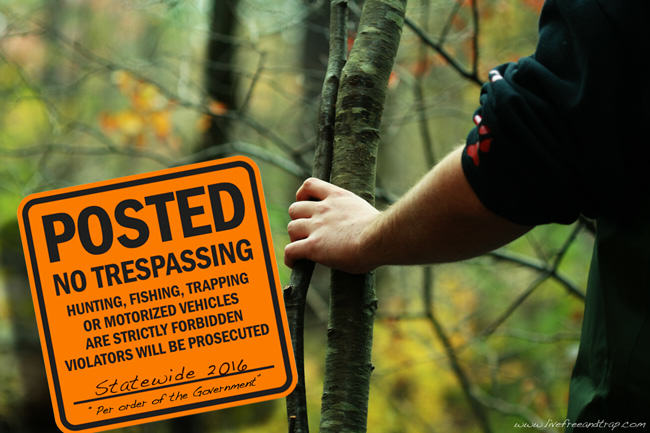
I recently sat in on a conservation meeting in a sportsmen’s lodge outside Concord, New Hampshire. The topic for discussion was the lack of camaraderie amongst sportsmen and women, and the toll this has taken on conservation and wildlife programs throughout the state and region. One man said his piece on what was wrong with the current state of hunting and trapping across America. “I’m going to say something that may offend some of you," he cautioned us, "but it needs to be said. Sportsmen groups are one of the most unorganized groups of people in the country.” There wasn’t a single rebuttal from anyone in attendance; everyone knew full well what he meant, and furthermore, what it means for the future of consumptive outdoor activities in the region and the country.
It’s a subject that not too many hunters and anglers recognize, or want to admit, but those of us in more “niche” activities like hound hunting and fur trapping know it all too well. Let’s face it, you may be a big-time duck hunter and passionate about your sport, but when a bill comes before your state legislature to restrict or ban bear hunting, are you as a duck hunter, going to take the time to write to your representative to save bear hunting when you know full well you’ll never hunt bear? I’m guessing the answer, nine times out of ten, would be “no”, and that's one of the reasons why consumptive outdoorsmen and women are constantly under scrutiny from anti-hunting and anti-consumptive organizations nationwide.
Decades ago this type of mindset was unheard of. If you hunted deer, chances were you also dropped a line in the creek for trout and trapped muskrats along the marshlands during duck season. In many states and provinces, this way of life still prevails as larger populations of rural folks hold tight to their outdoor self-reliant roots. But for many of us, the community of consumptive sportsmen has become fragmented. We are passionate about our own particular practices, but fail to recognize hunting, fishing and trapping as an all-encompassing benefit to conservation and outdoor recreation.
Now I know there are plenty of you reading this and wondering what I’m talking about, thinking that it's only common sense to support all forms of hunting, trapping and angling. Unfortunately nowadays, your train of thought is in the minority, and this concept is seldom heard when the proverbial deer piss hits the fan.
Yes, we should support and commend one another for having the common sense to want this natural world managed and regulated as a resource for all consumptive practices. However, every state and province in North America has divisions within its hunting ranks. Many bird hunters don’t care for trappers; many deer hunters don’t care for hounds-men; many anglers don’t care for hunters. These divisions rise to the surface every fall, and sometimes disputes over wildlife management spill into clubs and departments, causing greater divides and offshoots.
When a bill or piece of legislation does come along threatening the current ways of hunting and trapping, it's usually only those whose hides get affected (pun intended) that spend time voicing opposition.
Meanwhile, the animal rights groups and “hands-off" environmentalists have a field day presenting themselves as the majority, when in reality this is clearly not the case.
So what exactly am I asking for? Am I seriously trying to convince every New Hampshire deer and pheasant hunter to show up at the next hearing on anti-trapping legislation? Well, frankly, in a perfect world that’s what I’d like to see, and I recall a time when that would not have been an outlandish request.
What I will realistically settle for is for all of you to join your local sportsmen’s group - not your local skeet club or shooting range, but your state organization dedicated to preserving hunting, fishing, and trapping for everyone. The Sportsmen’s Alliance for instance, is a national organization that champions such values. This group serves as a lookout to protect deer hunters and bass fishermen, as well as fur trappers, hound hunters, and turkey callers. While national groups like the Sportsmen's Alliance do an excellent job, we must also support one another at the state and regional levels. Almost every state and province has some kind of consumptive sportsmen’s group; Maine has SAM, New Hampshire has the NH Wildlife Federation, and so on from Vermont to California. These groups not only support all major forms of regulated hunting and fishing, but also serve as a bridge of unity between the different classes of these outdoor activities.
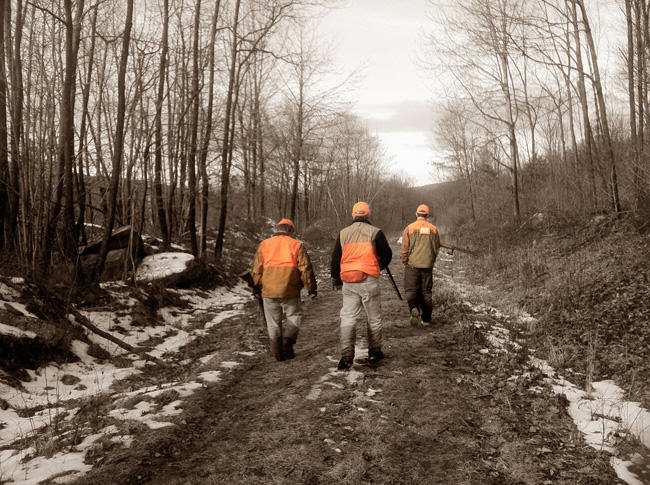
When each of you took your hunting or trapping education classes, you learned about concepts like carrying capacity, wildlife management and conservation. I can tell you the Primos hunting decal on the back of your F-250 doesn’t mean a thing if you don’t support the other aspects of conservation that go along with its meaning. It really doesn’t matter how much you spent on your duck blind, or which Pro-Staff you belong to - if you aren’t willing to recognize and support the other aspects of wildlife conservation, such as fur trapping and bear hunting, your Real-Tree camo pajamas are nothing more than a fashion statement. More than 90 million U.S. residents (16 years old and above) participated in some form of wildlife-related recreation in 2011. With numbers like this, it’s a downright embarrassment that we must constantly fight to keep trapping and hunting relevant today.
Despite what anti-hunting activists may say or think, I know lack of support for these “niche” activities isn’t due to lack of individual sympathy for the cause, but rather a lack of motivation to see the fight through. This is where we all, as outdoorsmen and women, must stand together against those who wish to abolish all forms of hunting and fishing. If you don’t believe your brand of outdoor hunting could be targeted, take a look at the current headlines to get a snapshot of how anti-hunting groups deceitfully operate. They know how difficult it is to push a man off his stool. They know it's much easier to whittle away at each supporting leg of that stool when he’s not looking, and watch him fall on his ass in sheer shock and surprise!
Keep in mind these organizations don’t protest hunting and attempt law changes on principle. Their primary motivation is donations. Take a look at any of the anti-hunting groups like HSUS, PETA and Furbearer Defenders, and you’ll see their websites plastered with “donate-now” buttons. They parade state-to-state crying injustice, corruption and animal cruelty while soliciting for donations. Once the deed is done, and they’ve won the argument, they’re on to the next state to suck the life out of their outdoor conservation groups. The wildlife these groups claim to support end up suffering in their wake as they continue to follow the money. Its common knowledge that most of the people who speak against hunting at these state hearings are paid to be there – it’s much more motivating to “save the animals” when you’re collecting a large paycheck in the process. But instead of standing and fighting these anti-hunting groups, sportsmen are busy pushing their neighbors under the bus in the hope these groups will move on if trapping and bear hunting are banned. This is a huge mistake, as even the most basic research on these groups will show this is not their end game. Staten Island is already experimenting with controlling its deer population by castrating bucks rather than allowing hunting; it’s happening right in front of your eyes and I’m sorry to say the “Redneck pride” sticker on the back of your truck isn’t going to stop it.
It’s not all doom and gloom; there is a light at the end of this ever-growing tunnel. You can start by becoming an active member of your local sportsmen’s club and keeping an ear to the wall for anti-hunting and trapping legislation. Find out who your local district and state representatives are and let them know you are a hunter or trapper. Whether they’re Democrat or Republican, conservative or liberal, most representatives listen to what their constituents are saying. Sending a handwritten letter introducing yourself and your outdoor activities is a good start to breaking the ice before legislation is introduced. It doesn’t take a lot of time either - I work a full time job, maintain and run a pro-trapping website for free, and take an active role in my local conservation groups with time still left over to hunt and trap!
To summarize, whether you hunt to put venison in the freezer, fish for sport, bird hunt with dogs or set traps for natural fur garments, you are an integral part of the North American Model of Wildlife Conservation. Your support is needed as our society is overcome by tablets, smart-phones, self-driving cars and Kardashians. Our self-reliant ways of life are ALL in jeopardy as habitat loss and out-of-touch citizens continue to constrain and restrict our activities. It’s time we start pushing back and regain our freedoms as fixtures of the natural world. United We Stand, Divided We All Fall.
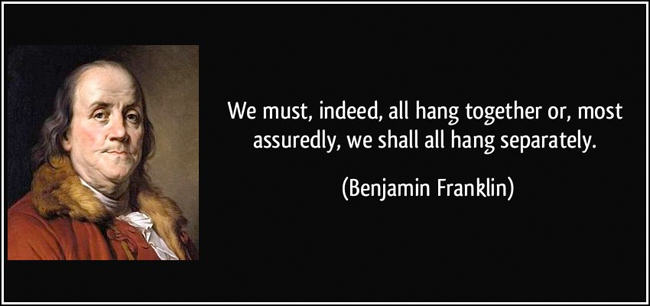
FOLLOW JEFF TRAYNOR'S "LIVE FREE AND TRAP" ON:




Unfortunately, this could happen to anyone working with fur these days, especially retailers selling any sort of fur or fur-trimmed…
Read More
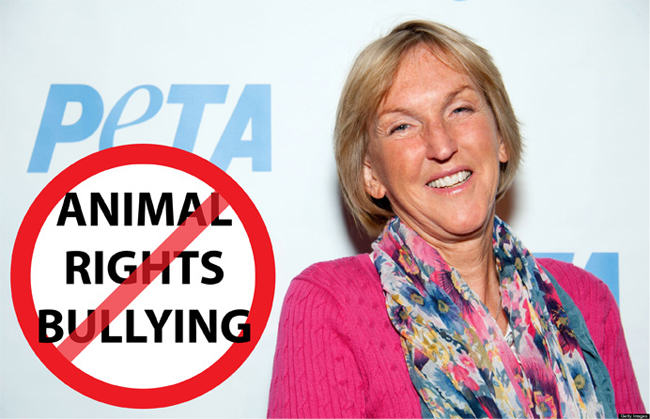
Unfortunately, this could happen to anyone working with fur these days, especially retailers selling any sort of fur or fur-trimmed products.
A veteran North American retail furrier – who shall remain nameless here, to protect the innocent – has participated for the past ten years in a high-profile fund-raising fashion show, in support of a local charity. About a month before this year’s show, he spoke with the organizers who confirmed that they were looking forward to working with him again. Then the animal-rights bullies showed up.
Just two weeks before the event, he received a call from the fashion-show producer. She informed him that the Events Committee had decided they could not include his products in the show this year. “One of the sponsors is against fur,” she said, as if this explained everything. The committee had made their decision and nothing could be done, she told him bluntly.
And that might have been the end of the story, except this retailer is not the sort who likes to be told that “nothing can be done” ... especially when it involves mindless kowtowing to anti-fur bigots. Sensing that the show producer was not open to discussion, he went above her head and contacted the charity’s Events Coordinator. What he did next should be an inspiration to all furriers – and, indeed, to everyone who believes in democracy.
Here is a summary:
She promised to speak with her superiors. And, sure enough, 24 hours later the retailer received a call from the charity’s CEO. It was Friday afternoon.
“I wanted to call before the weekend so you wouldn’t have to worry; you’re back in the show,” she said. The activists were not “sponsors” of the event; they had bought a table, like many others. In any case, the Committee should never have made this sort of policy decision without consulting with her. “This is not the way we do things,” she said. The charity appreciated the support his company had offered for so many years; they were delighted that he was ready to participate again. Have a lovely weekend!
Two weeks later, the fashion-show evening was a wonderful success, with almost 500 people in attendance. “I was pleased to see that several of the charity’s board members placed bids for the fur scarf we contributed to the silent auction,” says the retailer.
“I was worried that the activists would make a fuss when my fur scene came on,” he says. “But there was nothing but applause. I found out later that the activists had cancelled their table when they learned that they couldn’t impose their will on the organizers. See how phony their support really was all along!”
The retailer sent a note to the CEO after the show, congratulating her on a wonderful evening – and thanking her for having the intelligence and integrity not to give in to the activists’ bullying tactics.

With fur season revving up again, we hope that his little story will provide encouragement to any retailer who is harassed by activists. Truth About Fur will be preparing a “tool kit” of resources you can use to defend your business, including blog posts like the one cited above.
And if you have a story about tactics that have worked for pushing back against activist bullies, please share it with us!
SEE ALSO: STANDING UP TO ANTI-HUNTING BULLIES - A CASE STUDY FROM ONTARIO
The world is changing and, with it, our approach to consumption. As the impact of global warming worsens, many consumers…
Read More
The world is changing and, with it, our approach to consumption. As the impact of global warming worsens, many consumers are rethinking what they buy, and how much of it. "Local", "organic" and "minimalism" are all buzzwords many of us are drawn to, and some people question the need to eat animals, or wear leather and fur. Where does that leave us with animal use?

The use of animals is an ethical dilemma that many people question, but most people agree that if animals are well-treated, they are not in danger of becoming extinct, none of the animal is wasted, and the animal is put to good use, then it is acceptable for us to use and consume them.
SEE ALSO: WHY FUR IS THE ETHICAL CLOTHING CHOICE
Animal use is an integral part of many people’s lives, and is linked to essential products in our everyday life, such as medication, food, and clothing. Animals are used in medical testing in order to find cures to life-threatening diseases. We eat animals and while some people question the need to do this, there is plenty of evidence it can be done without harm to our planet. In fact, lots of land is better suited for pasture than for cultivation. And remember that animal manure is used to replenish the soil to grow crops. But if we are concerned about possible impacts, a small reduction in the amount of meat we consume – and waste – can go a long way. And lastly, we wear many types of animal products in order to protect ourselves from the elements. Fashion may not be essential, but clothing is. The need to keep warm in cold weather is a matter of life and death.
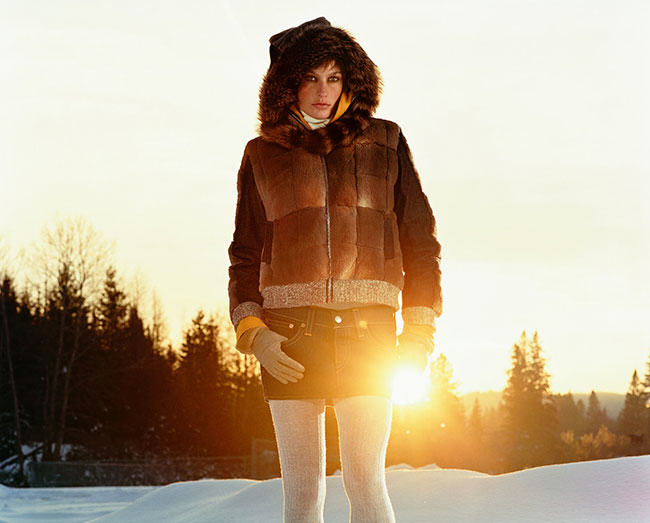
If you live in a cold country, you’ll need clothing that can protect you from the elements, and your choices should involve leather, fur, and other animal products. Why? Because there are no viable alternatives.
If we really care about the environment (and we all should because nothing else matters if we don't have water and food and clean air), we will want to buy sustainable fashion products that use production processes that are not too harmful to the environment, that are long-lasting, and that are biodegradable. That is exactly what animal skins are. Yes, they aren’t perfect; leathers and furs use chemicals in their processing and finishing (like all other textiles), and sometimes the farming has an environmental impact. But when you consider how long a good fur coat or high-quality leather bag lasts, you’ll realize that the environmental damage is minimal compared to the lifespan of the item.

So here they are, the five reasons why we must all wear leather and fur, and these reasons all point to the fact that there are simply no viable alternatives.
1. There are no alternatives that are biodegradable. The synthetic alternatives to fur and leather take much longer to biodegrade (50 years for treated leather vs. 500+ years for pleather), and even when they have “biodegraded”, there are still remains of the plastic particles in the soil, which we are now finding in our oceans and inside fish. Truth About Fur is in the process of conducting an experiment to prove that real fur biodegrades much faster than “faux”, and the results are more dramatic than even we expected.
2. There are no alternatives that are sustainable. Synthetics are made from petroleum by-products. You probably know that petroleum is not a renewable resource. The problems caused by the extraction and transport of petroleum are only a part of the issue, let’s not get started on the political issues (read: wars) that are caused by petroleum. Animals are a renewable, sustainable resource. (Actually, wool, down, and cashmere and other similar materials are sustainable, so these are certainly viable alternatives when it comes to winter coats. But the animal rights activists are against those, too, since they come from animals. Usually a sensible winter wardrobe would combine fur, leather, down, wool, and cashmere – you’ll never be cold.)
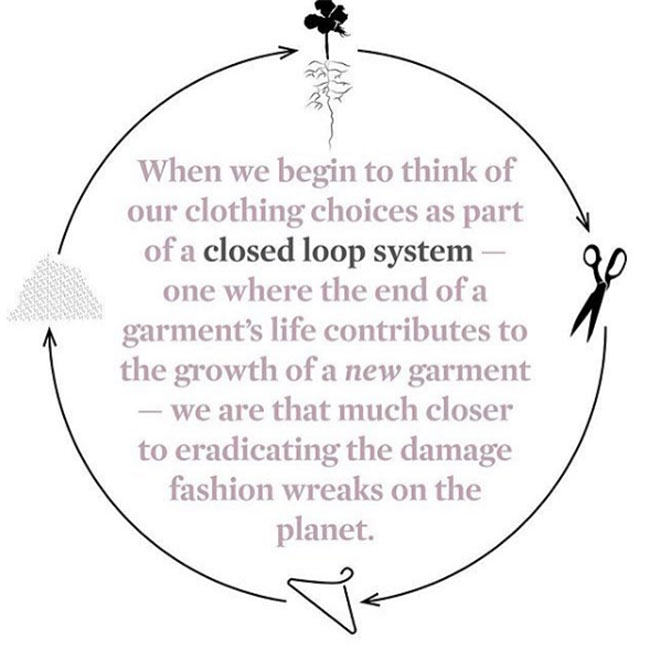
3. There are no alternatives that are as long-lasting. While a fake fur or leather jacket may be sitting in a landfill for a few hundred years longer than its real counterpart, that doesn't mean it is longer lasting in a fashion perspective. When well cared for, fur and leather items can last for decades, but fake leather and fur hardly do the same. Both look worn out much faster (and not in a cool way – like worn out leather), and they also don't maintain their warmth or waterproof qualities. You don’t find many fake leather bags being handed down from one generation to the next, do you?
4. There are no alternatives that are as environment-friendly. The points above do a good job of making this argument, but we can add to this by talking about the processing. Yes, leather and fur require chemicals for processing (leather requiring more than fur as you need to remove the hairs from leather, whereas with fur you are aiming to protect them). But two important things to consider here are that (1) the chemicals used to “dress” furs are really quite benign, e.g., alum salts (which are sold in the pharmacy to add to your bath water for sore muscles), and (2), the longevity of leather and fur items means that the chemicals per wear are much less than a synthetic alternative. Your leather bag or fur coat may have used chemicals in its production, but the fact that it lasts you 30 years makes it a more environment-friendly option than the synthetic version, made from a non-renewable resource that requires chemicals in its processing, which then looks tatty after two seasons. Another important thing to consider is that no synthetic material looks good in its natural state, while fur is frequently used in its natural state (meaning its natural colours), reducing the need for bleaches and dyes.
5. There are no alternatives that are as safe. We’ve yet to fully understand the bodily harm coming from wearing synthetics, but there’s a great deal of research that shows that synthetic materials may contribute to health issues such as infertility, respiratory diseases, and cancer. Why take the risk when there are natural alternatives?
If you truly care about the planet and its inhabitants, you’ll make consumption decisions based on what’s best for us all. You might refuse to eat animals or watch them being used as entertainment, but it is impossible to deny that synthetic clothing is causing irreparable harm to our planet. Choose materials that are sustainable, long-lasting, and biodegradable. Choose fur and leather because there are no viable alternatives.
***
To learn more about donating to Truth About Fur, click here.
It’s time for our September Fur In The News roundup and we want to talk about fur fashion! Namely the…
Read More
It's time for our September Fur In The News roundup and we want to talk about fur fashion! Namely the "hat of the season", which just happens to be a trapper hat made of fur (above). Those are fashion trends we can get on board with! And for the guys, it's all about fur slides. Have you bought your pair yet? And be sure to check out this fantastic feature in Vogue's September issue.
Speaking of trapper hats, we were pleased to read this article about how more women are hunting. It would be nice to hear of the same thing happening with trapping. And speaking of women in trapping, here's a lady who truly inspires us. We love this video of Jane Dragon telling us about how nothing is wasted when using animals - a great example of how to use animals responsibly.
In other trapping and wild fur news, we are hopeful about these plans to protect a vast area of land in Ontario, Canada, which will have incredibly positive benefits for the people who live, trap, and hunt on those lands. A feature on the coyote (above) taught us a lot about this resilient creature, while this piece on the effect of the EU seal ban on the people of Greenland was worrying. The ban is not doing them any good, that's for sure.
If you are a trapper in Montana, don't forget to vote NO against this proposition to ban trapping on public lands. Did you do anything fun on National Hunting, Fishing (and Trapping!) Day? We celebrated in Canada on the 17th and in the US on the 24th. This interesting chart (below) shows the different animals that are trapped in the province of Quebec.
We can't write a news roundup without including some activist shenanigans, so here they are. An interesting trend we are seeing is the activists turning on themselves. This isn't the first time we've read about vegans who don't approve of PETA's marketing tactics, but this might be the first time we actually agree with the them! Speaking of vegans, Italy is talking about outlawing veganism for kids.
But not all activists are busy writing articles (we wish), there are many who are up to no good. This Canadian activist is being investigated by police for threatening to kill the mayor of Miami. (Please let him go to jail! Please let him go to jail!) PETA is keeping itself busy by trying to control the content of a video game which is as ridiculous as it sounds. And the dumbest activist of the month award goes to this one who got stuck in a bear trap while he was trying to remove the bait. We feel really sorry for him. Not.
We've penned our own little attack on PETA ... Ok, let's call it a little investigation instead. We've looked into one of PETA's angora rabbit videos (above) to try and determine whether it was staged. A good read, indeed!
Let's end our roundup with a few articles of note, starting with this blog post, entitled Why Fur Is the Ethical Clothing Choice, which explores public opinion about animal use and the ethics of the fur trade and fur fashion. We loved the story of the fisherman who found this ancient axe while fishing for bass. And lastly, the horror story of the month is one about Russians, namely two married couples stuck in a small cabin in the Arctic and waiting for a rescue that is a month away. Can you imagine the arguments?!? Oh yeah, and they are also surrounded by hungry polar bears.
A recent on-line, anti-trapping rant by Born Free USA boss Adam Roberts (“What kind of person still traps wild animals?”, Huffington Post,…
Read More

A recent on-line, anti-trapping rant by Born Free USA boss Adam Roberts ("What kind of person still traps wild animals?", Huffington Post, Sept. 7, 2016) underscores how trappers are on the front line in the war against humans using animals – a war in which the weapons of choice are misleading images, inflammatory rhetoric, and exploiting the information gap between rural and urban cultures.
Roberts' attack drives home how important it is to explain, again and again, the vital role trappers play in responsible wildlife management and conservation.
Like other "animal-rights" groups, the folks at Born Free rage against a wide range of animal-use activities. This time, as part of their "Victims of Vanity 2" campaign, they are promoting an “undercover” trap-line video showing “atrocities” that they claim “occur regularly across America”.
“What kind of person purposely destroys a beaver dam and sets a ‘wall of death’ of Conibear traps," asks Roberts, "knowing that the unsuspecting beavers will return to repair their handiwork – only to be possibly smashed across their abdomens and drowned?”
The insinuation is that such traps cause terrible suffering. Born Free's own video, however, shows beavers that have clearly been struck by the trap bar across the back of the neck, breaking cervical vertebrae and causing rapid death, just as this quick-killing trap is intended to do. These traps were developed through several decades of (on-going) scientific research to provide the most humane possible methods for controlling wildlife populations.
North America’s world-leading humane-trap research program has provided the scientific basis for comprehensive state and provincial trapping regulations, trapper-training programs, ISO standards, Best Management Practices, and the Agreement on International Humane Trapping Standards.
SEE ALSO: Neil Jotham: A life dedicated to humane trapping
Thanks to this pioneering work, the time-to-death produced by quick-killing traps like those shown in Born Free's video is now measured in seconds. Roberts knows, however, that most of his readers live in cities and have little real contact with nature. People who find their meat neatly wrapped in cellophane on grocery store counters are easily shocked by pictures of dead animals, no matter how humanely they were euthanized – especially when cued with sufficiently emotional rhetoric.

Similarly, the live-holding devices used for capturing larger predators – like the coyote shown in Born Free's video – are not diabolical instruments of “torture”. Modern, live-holding foot traps are used by wildlife biologists to capture and release – unharmed – wolves, lynx, river otters and other animals for radio-collaring or reintroduction into regions where they were previously extirpated. To claim, as Roberts does, that such traps “have remained relatively unchanged for 400 years” is nonsense.
But what about the bigger question Roberts implicitly raises: should we really be killing wild animals at all?
In fact, there are many reasons why wildlife populations often must be managed. Overpopulated beavers can completely “eat out” vegetation in their region; the population will then crash and there may be no beavers at all for many years. Regulated trapping can smooth out these boom-and-bust cycles, maintaining healthier and more stable beaver populations. This is one reason why biologists believe there are now as many beavers in North America as there have ever been. There can, however, be too much of a good thing: beaver dams in the wrong places can flood roads, fields, and forest habitat. When your basement (driveway, back yard) is flooded, who’re ya gonna call: Mr. Roberts ... or your local trappers’ association?
Meanwhile, coyotes are the number-one predator problem for sheep and cattle ranchers, and many states and provinces have been obliged to offer bounties to keep their populations in check. Coyote, fox and raccoon populations are also culled to protect endangered ground-nesting birds or sea-turtle eggs. Overpopulated foxes, skunks and raccoons are prime vectors for rabies and other diseases that can be transmitted to humans and pets. For these and many other reasons, there will always be a need for trapping, whether or not anyone buys fur. Without a market for fur, however, these management efforts would be paid for by the government – i.e., by tax-payers – as they now are in many parts of Europe.
SEE ALSO: Why fur is the ethical clothing choice
Trappers protect nature in other ways that are not often publicly recognized. While we all “care” about nature, most of us now live in cities. Trappers are our eyes and ears on the land, sounding the alarm when nature is threatened by inappropriate resource extraction or industrial activity. Trappers' associations across North America are on the front lines to ensure that forestry practices respect the needs of wildlife, for example by leaving a swath of uncut trees along watercourses. And, like the canary in the mine, trappers are the first to spot changes such as reduced reproduction rates among mink that may signal industrial pollution upstream. Harvesting data, including the sex and age distribution trends, provide vital information about the health of our wildlife populations.
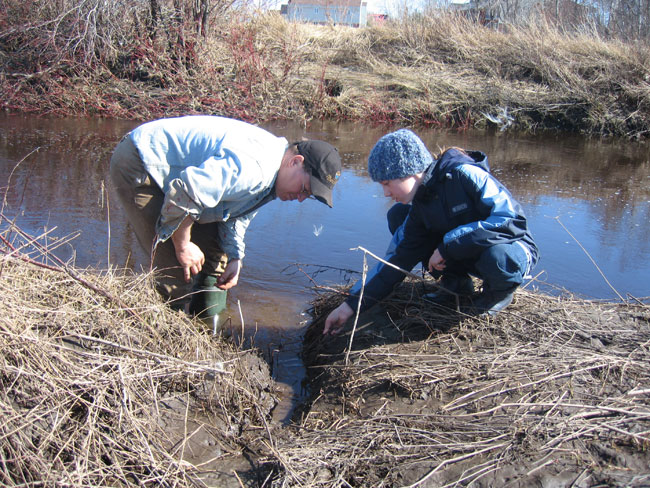
Most important of all, nature is not a museum. Most wildlife species produce more young each year than their habitat can support to maturity. The ones that don’t survive feed those that do. We are part of nature and we too can make use of the surpluses that nature produces – year after year, generation after generation – so long as we protect the habitats and ecosystems that provide those surpluses. This is called “the sustainable use of renewable natural resources”, a central conservation principle promoted by the International Union for Conservation of Nature (IUCN) and other conservation authorities. (By contrast, the synthetic materials that animal activists would have us wear are usually derived from petroleum, a non-renewable resource.)
Does all this give us the right to abuse animals? Absolutely not.
The Born Free video also shows a trapped coyote being kicked, prompting Roberts to ask, "What kind of person watches a tethered and helpless coyote writhe in pain and distress, unable to move because of the intensely unforgiving steel jaws clamped to her paw, kicks her in the side, and then finally shoots her in the chest so that her lungs fill with blood, and she dies a miserable, suffocating death?"
Most trappers would be disgusted by this scene. There is no excuse for kicking an animal, ever. Furthermore – Roberts' "intensely unforgiving" rhetoric aside – every trappers' association and trapper-training manual teaches that live-trapped animals should be killed quickly and humanely with a direct shot to the head. But this completely unacceptable behavior of one individual does not give Roberts or Born Free the right to smear the reputations of more than 200,000 North American trappers.
On the contrary, as society becomes more interested in protecting our natural environment, it is time that we learn more about these remarkable and knowledgeable men and women – the small minority among us who continue to live close to the land.
What kind of person still traps today? Far from the grotesque caricatures that animal activists like to portray, in many real and practical ways, today’s trappers are the true guardians of nature.
Sensationalized videos claiming to show “animal abuse” are sadly a fact of life these days for animal agriculture, and they’re often…
Read More
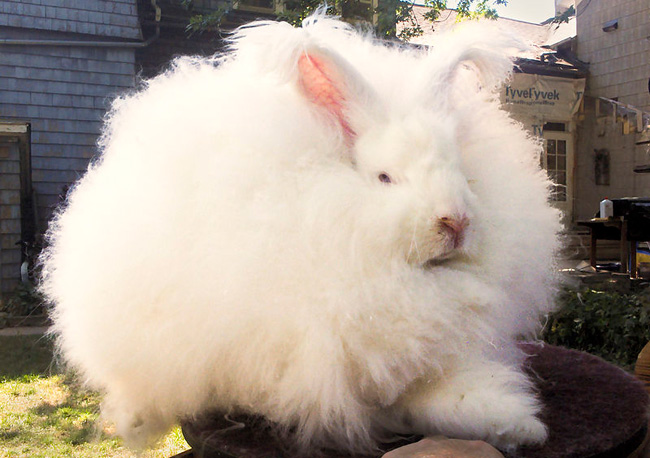
Sensationalized videos claiming to show “animal abuse” are sadly a fact of life these days for animal agriculture, and they’re often promoted (if not actually filmed) by People for the Ethical Treatment of Animals. One such video, dealing with wool production from Angora rabbits, premiered in 2013 and has gone unchallenged - until now. An Angora farmer in the US contacted us to raise some real concerns about this video, which we think are worth sharing.
Before dissecting the video, let's start with a backgrounder on Angora wool production.
There are two distinct types of Angora rabbit: those that moult, and those that don’t.
Those that moult have their wool plucked every three or four months, just before moulting begins. Plucking produces the best wool because most of the guard hairs are left behind, but it is time-consuming. Plucking leaves in place the incoming coat, although one breed, the French Angora, can be fed a depilatory which results in the exposure of bare skin. Here's a video showing how to pluck an Angora properly.
Angoras that don’t moult are sheared. Because the guard hairs are included, the wool is not such high quality, but collecting it is quicker and the yield is higher because wool can be sheared even from sensitive areas of the rabbit's body. Shearing is therefore more common in commercial operations. The most important commercial breed is the high-yielding and virtually mat-free German Angora. Ninety per cent of Angora wool production today is in China, and almost all Chinese farms raise German Angoras. Here's a video showing how to shear an Angora properly.
OK, it's time to watch the main attraction. If you find videos of animal cruelty hard to stomach, just give it a miss and take my word.
0:10 – 1:03: This rabbit is almost certainly a non-moulting German Angora, even though it looks very similar to a moulting French Angora. We can tell it's a non-moulting breed because its legs are tethered to what is called a stretching board. These are sometimes used, but not always, when rabbits are sheared.
PETA describes the stretching process as follows: "During the cutting process, their front and back legs are tightly tethered – a terrifying experience for any prey animal – and the sharp cutting tools inevitably wound them as they struggle desperately to escape." In reality, while rabbits being stretched for the first time might be nervous, they soon learn to relax. Stretching keeps the rabbit still and pulls the skin taut, thereby preventing nicks and cuts from the shears - the total opposite of what PETA claims. Here's an excellent video demonstrating how stretching is done.
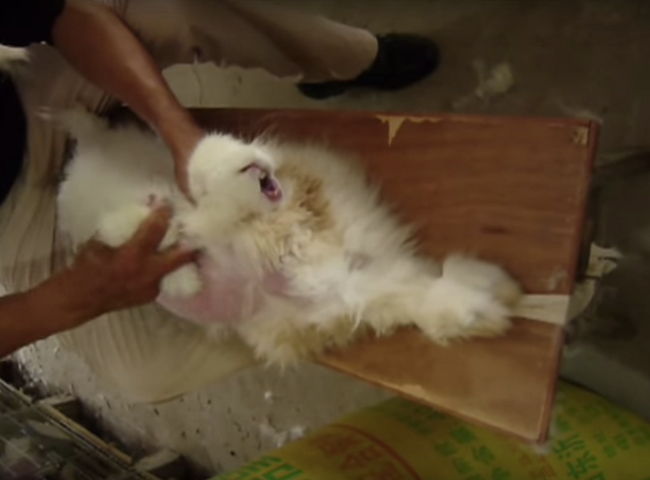
Oh, but what's happening now? Having set the rabbit up for shearing, the man is plucking it right down to its skin! He is also applying far greater force than is ever needed to pluck a moulting breed. This is all wrong for two reasons. First, the rabbit is obviously in pain. Second, as US Angora farmer and advisor on this blog post Dawn Panda says, this could be called "worst business practice". "We see the wool being yanked off, guard hairs included, in a manner that will ruin the coat for several cycles," says Dawn. "It will damage the hair follicles and greatly reduce the quality and value of future harvests as new coats will grow in coarser and hairier. No one trying to make money would do that."
This raises a disturbing question. Are we seeing a non-moulting German Angora being forcibly, and very roughly, plucked just for the camera?
READ ALSO: "Saving Society from Animal 'Snuff Films;". Fur Commission USA.
1:04 - 1:17: Here a rabbit is being sheared, so we don't see any pink skin. It appears calm. At this point in the video, it is not clear whether this footage and the footage of a rabbit being violently plucked were shot on the same farm. We'll come back to this because, if all the footage is from one farm, the question is raised why one rabbit would be plucked and one sheared.
1:18-1:22: Here a rabbit that has just been sheared is shown suspended in the air by its front legs. This makes no sense, Dawn assures us. There is no part of Angora husbandry in which a rabbit would ever find itself in this situation. It can't even be claimed the rabbit fell off its stretching board because it's far too high. Once again, we can’t help but wonder if this bizarre scene was staged for the camera.

1:36-2:02: Here we see a parade of seven rabbits in their cages. Of these, the first three still have hair on their torsos and have been sheared. The next three have been plucked right down to their skin. The last rabbit cannot be seen clearly.
This scene suggests that the violent plucking at the beginning of the video and the shearing that followed took place on the same farm. And since commercial farmers generally don't have mixed herds of moulting and non-moulting rabbits, we can also suppose that all the rabbits shown are non-moulting German Angoras. The burning question is now unavoidable: Was the violent plucking of a non-moulting rabbit in the opening sequence staged for the camera? It would not be normal practice on a commercial Angora farm, insists Dawn.
"If animal lovers would use their heads, they wouldn’t be taken in by sensationalist publicity stunts," she says. "However, the addition of poignant music seems to ensure that one’s heart is going to overrule one’s head and voila! Misinformation is spread exponentially, the lie repeated until it’s accepted as fact. There are a number of excellent teaching videos on plucking and/or shearing Angora rabbits on YouTube; the lack of screaming, struggling or any pain is the norm, not the exception. This PETA video certainly does not reflect the reality of Angora farming as I know it!"
If PETA's Angora rabbit video was indeed staged to misrepresent normal practice, we should not be surprised. This ignominious tactic by animal activists traces its roots all the way back to 1964, when the urban myth about seals being "skinned alive" began with a film that was later proven to have been staged.
While people have a right to believe that humans should not kill or use animals in any way, they lose all credibility when they manipulate images to attack the reputations of those they disagree with.
Is fur an ethical clothing choice? The media often seem confused about this question, acknowledging the resurgence of fur in designer…
Read More

Is fur an ethical clothing choice? The media often seem confused about this question, acknowledging the resurgence of fur in designer collections while uncritically reporting sensationalist animal activist complaints about this trend. The implied (and often explicit) message is that consumers are less bothered about whether fur is an ethical clothing choice, and more concerned about looking good. In short, "fashion trumps ethics". But is this true?
To answer this question, we must take a step back and ask what makes it ethical to use any animal product.
Some of the best work on this subject was done by the Royal Commission on Seals and the Sealing Industry in Canada (1984-86). Public-opinion research conducted in six Western countries (the UK, France, West Germany, Norway, Canada and the US) showed that “there is no agreement on whether it is ethical or moral to kill seals. The choice is a matter of personal conviction.” [Report of the Royal Commission, Vol. 1, p. 23, 1986.]
The Royal Commission also found, however, that there is “substantial weight of opinion that if the killing of any wild animals is to be accepted as ethical, it should satisfy the following conditions”:
Let’s see how the modern North American fur trade stacks up when measured against these widely accepted ethical criteria.
This is a “conservation” or “sustainable use” argument. Simply put, there is no future in using up resources we depend on for our survival.
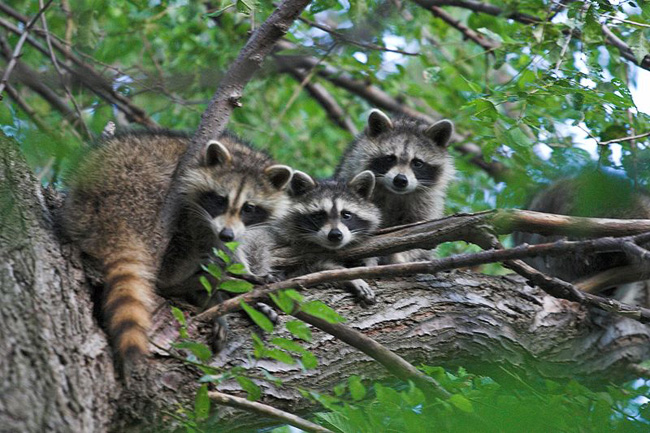
About one-half of the furs produced in North America today comes from farms, so there's no threat of extinction there. Furs taken from the wild, however, also come from abundant populations. Government-regulated trapping seasons ensure that we use only part of the surpluses produced each year in nature. Most species produce more young than their habitat can support to maturity. Animals that don’t survive feed those that do. Humans are part of this cycle and we too can use the surpluses that nature produces, year after year, generation after generation – so long as we protect and maintain the natural ecosystems that produce this bounty.
This is called “the sustainable use of renewable natural resources”. It is a central pillar of modern conservation policy that was first promoted by the landmark World Commission on Environment and Development [Our Common Future, 1987], and now directs the work of the International Union for Conservation of Nature (IUCN).
Thanks to excellent national and international regulations, North American furbearers that were once depleted in parts of their ranges have been restored, and more! Biologists believe that beavers are now as abundant as when Europeans first arrived, while coyotes, foxes and raccoons are more numerous in Canada than they have ever been. This is a real environmental success story.
So without question, the modern, well-regulated fur trade meets our first ethical criterion: the existence of species is not threatened.
This is the “animal welfare” argument, i.e., the belief that we have a right to use animals for food and other purposes, but only if we cause them as little suffering as possible.
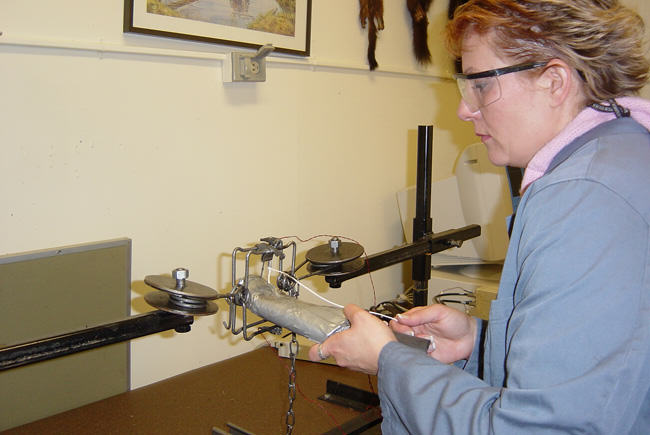
The modern fur trade has taken very seriously its responsibilities to prevent unnecessary pain or suffering. North America is the world leader in scientific research to make trapping as humane as possible. This research provided the scientific protocols for ISO standards, Best Management Practices, and the Agreement on International Humane Trapping Standards (1997).
Based on this research, state and provincial wildlife authorities determine which traps may be used for each species. Most species can now be taken in quick-killing traps or “sets”. For the others (e.g., larger predators including coyotes, foxes, lynx, and bobcats), live-holding traps have been significantly improved to prevent injuries. The new live-holding foot-hold (or “leg-hold”) traps, for example, are often used by biologists to capture and release (unharmed) wolves, lynx, river otters and other animals for radio collaring or re-introduction into regions where they were once (often intentionally) extirpated.
On fur farms, mink and foxes are provided with excellent nutrition and care; this is the only way to produce the high-quality fur required to compete in international markets. Farms in the US are certified by Fur Commission USA, while in Canada farmers follow codes of practice developed by the National Farm Animal Care Council.
So the North American fur trade also satisfies our second ethical criterion: the responsibility to prevent unnecessary pain or cruelty is taken very seriously in the modern fur trade.
SEE ALSO: NEAL JOTHAM: A LIFE DEDICATED TO HUMANE TRAPPING
Activists often claim that it is unethical to kill animals for fur because "no one needs a fur coat". Fur coats are portrayed as "unnecessary luxuries"; raising and killing animals for fur is therefore characterized as “frivolous use”. But is fur really a frivolous or unnecessary product?
Humans need clothing to survive, and in many regions warm clothing is essential. Of course there are other materials to keep us warm, but the best of them (wool, down, leather) also come from animals. Meanwhile, most synthetic fibres (including fake or “faux” fur) are derived from petroleum, a non-renewable resource, the extraction and transformation of which entails serious environmental risks.
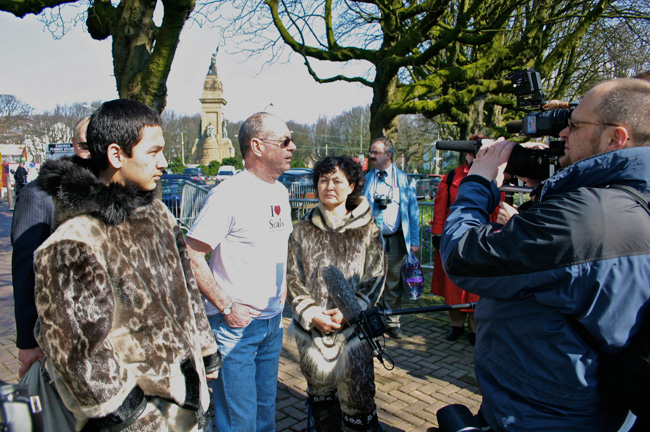
Trapping, hunting and fur farming, it should be remembered, also provide food and important income for people living in rural or remote regions where alternative employment may be hard to find; fur is certainly not “frivolous” for them.
Then there is the need, in many regions, for furbearers to be culled annually to maintain healthy and stable populations, to preserve their habitat, to protect endangered species (e.g., by culling predators that attack ground-nesting birds or endangered sea turtle eggs), and to safe-guard human health, livestock and property. If furbearer populations must be culled, surely it is more ethical to use these animals for clothing than to discard them.
Last but not least, fur clothing is remarkably long-lasting, can be worn “vintage” or taken apart and remodeled as styles change, and will eventually biodegrade – all important environmental virtues.
So, in multiple ways, the modern fur trade satisfies our third ethical criterion: the animals serve important purposes.
Most North Americans eat meat and therefore generally consider it ethical to use leather, a “by-product” that would otherwise be wasted. Fur, however, may seem more problematic if the rest of the animal is not used, as is often assumed. In fact, many wild fur-bearing animals (beaver, muskrat and other species) also provide food for First Nations and other people, especially in northern regions where cattle and other livestock cannot easily be raised. Wild furbearers not consumed by humans are returned to the bush where they are eaten by mice, birds and other animals. Nothing is wasted.
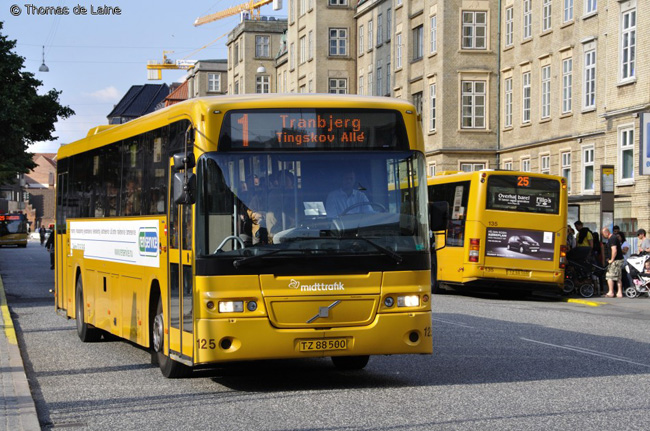
Meanwhile, farmed mink and foxes are fed left-overs from our own food supply – the parts of chickens, pigs, fish and other animals that we don’t eat and that might otherwise go into landfills. In addition to fur, farmed mink provide oil for cosmetics and the preservation of leather. Their manure, soiled straw bedding and carcasses are composted to produce organic fertilizers, to enrich the soil and produce more food, completing the agricultural nutrient cycle. Biofuels made from mink remains now power buses in Aarhus, Denmark, the world’s largest producer of farmed mink. Similar projects are being tested in North America.
So the modern fur trade satisfies our fourth ethical criterion: there is minimal waste.
As this brief summary shows, the modern North American fur trade satisfies all four of the criteria required to determine that fur is an ethical clothing choice.
Of course, this does not mean that anyone is obliged to wear fur. As the Canadian Royal Commission determined some 30 years ago, that decision is ultimately “a matter of personal conviction”. This has been confirmed by public opinion research conducted in recent years showing that about 80% of North Americans agree that wearing fur should be a question of personal choice.
As we are now officially into fur season, this month’s Fur in the News roundup features a lot of fur fashion,…
Read More
As we are now officially into fur season, this month's Fur in the News roundup features a lot of fur fashion, and some faux fur pas ...
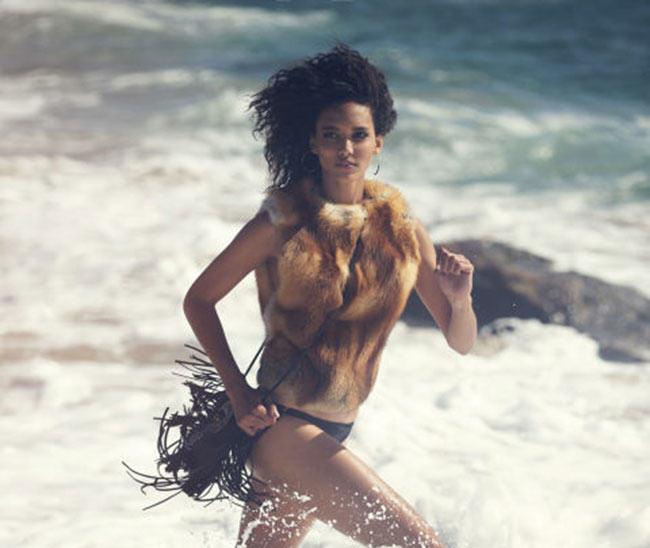
If you are in denial that summer is over, never fear, we still have a few good tips on how to combine fur into your beachwear wardrobe. Elle has several suggestions on how to wear fur on the beach (above) and Cindy Crawford shows us how to wear fur boots on a boat trip. Too bad she wasn't in a kayak made of seal skin. Lucky for us, the summer's most popular parka was made of fur and we think it will transition nicely into your fall fashion wardrobe. What else should you be wearing for fall? The fashionistas are suggesting fur sandals and these amazing fur backpacks from Fendi. Back to school is very chic this year!
If you love fur fashion, then you might be interested in reading about the longest fashion collaboration to date - the one between Karl Lagerfeld and Fendi which has resulted in some incredible fur fashion. And if you want to learn the tricks of the trade, then check out this school in Finland which teaches the skills to design and make fur garments.
There's been a lot of press about trapping, hunting and wild fur. (I guess the anticipation for hunting and trapping season is starting to grow!) New Zealand's possum fur industry (above) is really taking off, while Canadian media are talking about beavers (or furry, flat-tailed fiends, as some describe them) and muskrats. (This is a pretty good list of seven cool facts about P.E.I.'s muskrats.) Wolf hunting is making headlines, in Canada where there are concerns about a wolf trapping ban, and in Montana, where wolves appear to be very abundant. Speaking of wolves, bookmark this video of a man intentionally sticking his hand in a wolf trap, to show they do not cause a lot of pain.
The animal rights activists have been up to their usual no good, this time protesting to change the name of Tasmania’s Eggs and Bacon Bay to Apple and Cherry Bay. Locals are not impressed and they aren't the only ones who think animal rights activists go too far.
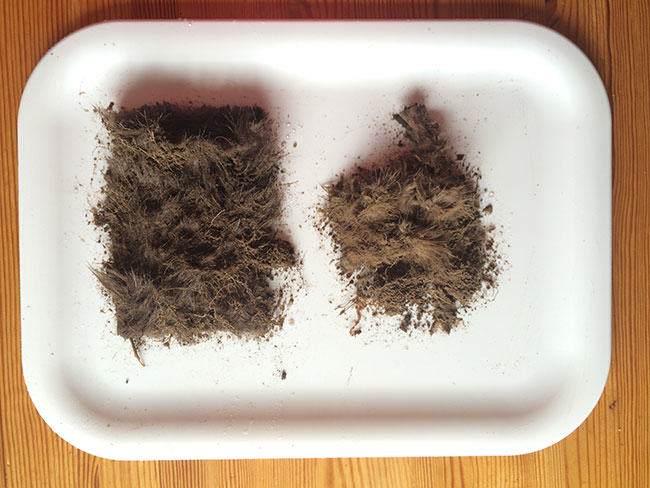
On the bright side, there has been a lot of media coverage recently on the negative side of fake fur, or what we like to call faux fur pas. This piece refers to faux fur as poison and this one talks about the harmful effects synthetics have on marine life. We have done a little test of our own, to see what biodegrades faster, real fur or faux fur (above). The results so far are quite astonishing. We aren't sure what to think about this company trying to make leather without cows, but we are watching closely.
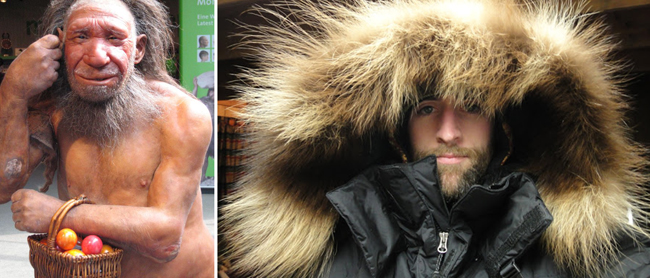
We loved this insightful fur industry profile from National Geographic, as well as the radio interview with the author that followed. But while fur remains popular on the catwalks, and is even being credited with helping us survive the last Ice Age (above), there's no denying fur farmers are going through a lean patch.

Let's end this month's roundup with some helpful educational materials, some related to fur and some not so much! We'll start with a chart (above) on how to tell real fur from fake. Or if you want to identify that bird of prey eyeing your trapline just by looking at its claws, here's a very useful claw chart. (Please let us know if there are better uses for this chart!)
People have 1,001 recommendations for removing skunk odor. If you've tried 1,000 of them, here's the 1,001st! And here's a tip that may save your life one day - what not to do if you run into a short-sighted lion!
Most of us already know that vegetarians are a leading cause of deforestation, but precisely three of you could even imagine how anglerfish mate! Talk about bonding!
And last but not least, how cute are these otters chasing a butterfly?
COOL FACT #1: Fur may have saved the human race New research suggests humans (Homo sapiens) survived the last Ice…
Read More

New research suggests humans (Homo sapiens) survived the last Ice Age and Neanderthals didn’t because humans were serious about fur clothing. Animal remains around Neanderthal sites lack evidence of furbearers, while human sites have fox, rabbit, mink and notably wolverine - the same fur still preferred today by Canadian First Nations for hood liners.
In the early 19th century, trappers came from far and wide to the US west coast to harvest huge populations of furbearers. It was these trappers, not the gold prospectors who followed, who opened up the west and put San Francisco Bay on the trade map. But no one remembers because no one named a football team after them. Go 49ers!
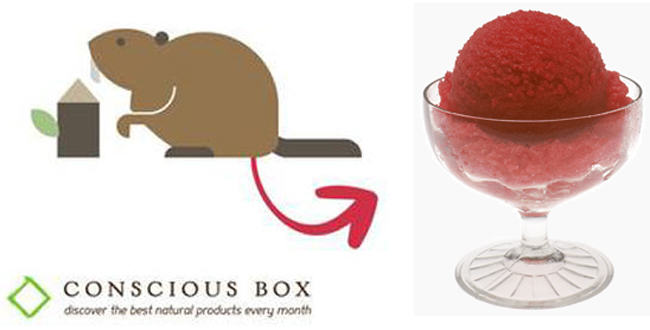
Next time you see the words "natural flavouring" on a food package, it might be referring to Castoreum, secreted from the castor sacs of beavers located between the tail and the anus. Usually it's used to simulate vanilla, but it can also pass as raspberry or strawberry.
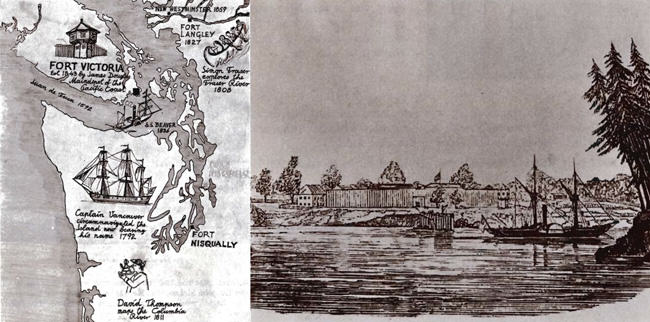
The search for fur drove Europe's exploration and settlement of North America, and many of today's towns and cities began as fur-trading posts. In fact, much of the border between Canada and the US traces the territories once controlled by Jacob Astor’s American Fur Company and the Montreal-based North West Company.
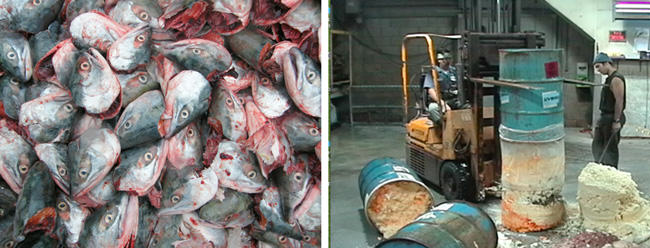
Have you ever wondered where all the animal leftovers from human food production go? Fish heads, chicken feet, expired eggs, spoiled cheeses? If you live in fur-farming country, chances are they go to make nutritious mink food. And the mink manure, soiled straw bedding and carcasses are composted to produce organic fertiliser to enrich the soil, completing the nutrient cycle to produce more food.
In Nova Scotia, Canada, pilot projects are transforming mink wastes into methane for bio-energy production. In Aarhus, Denmark – the country that produces the largest number of farmed mink – the public transit buses already run on mink oil.

Crabs will eat just about any seafood you offer them, but so will seals and sea lions, and they'll trash your crab pots to get at it. Enter mink bait! Crabs find their food by smell, and apparently the smellier the better because they love mink musk. But seals and sea lions can't stand it and will give your pots a wide berth!
The national animal of Canada has been prized for its luxuriant fur for hundreds of years, yet wildlife biologists believe there are as many today as there were before Europeans arrived. They also believe coyotes, foxes and raccoons are more populous now than ever. Truly modern trapping, regulated to allow only the removal of nature's surplus, is a perfect example of the sustainable use of renewable natural resources!
SEE ALSO: Abundant furbearers: An environmental success story.

After being weaned from their mothers, farmed mink are often raised in pairs, preferably a brother and sister, and sometimes even threes. Farmers have learned that keeping siblings together results in calmer and healthier mink.
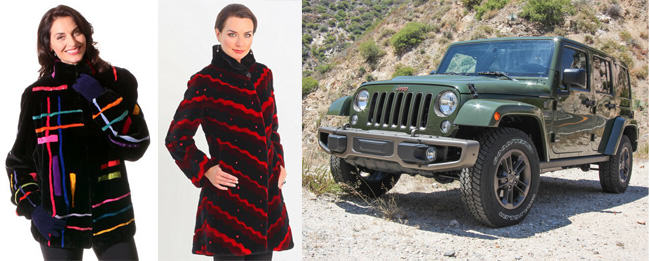
Fur garments are created individually, with all the cutting and sewing done by hand. Not counting all the work involved in producing the pelts, an “average” mink coat might take 35-40 hours of hand work, while an intarsia sheared beaver by Zuki could take 100 hours. That's longer than it now takes to assemble a car!
Each year, North Americans use about 7 million animals for fur. That's one sixteenth of one percent of the 12 billion animals they use for food. Yet animal activists focus more attention on the fur trade than on all other livestock industries combined. Go figure!
The fur industry is proud of the many ways in which fur is eco-friendly, including that after decades of use, it biodegrades. In…
Read More
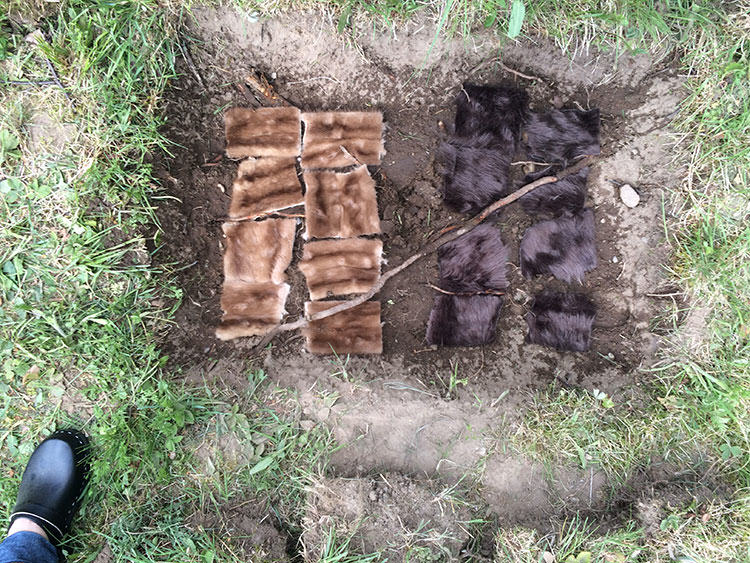
The fur industry is proud of the many ways in which fur is eco-friendly, including that after decades of use, it biodegrades. In contrast, when fake fur made from petrochemicals reaches the end of its useful, and typically very short, life, it goes in a landfill where it will sit until the end of time. Or will it? In pursuit of knowledge and truth, we decided to do a little experiment: the Great Fur Burial.
On May 14, we took a mink stole and a fake fur vest, cut them into equal-sized pieces, and buried them. Above is how the pieces looked on burial day. After 3 months, 6 months, and then once a year for five years, we would unearth a piece of the mink and a piece of the fake fur to check for degradation. This experiment is hardly scientific, but it only has to show one thing: do they rot, or not?
Last week we unearthed the first of the eight sets of fake and real fur. We set out to the burial ground, marked by two sticks.
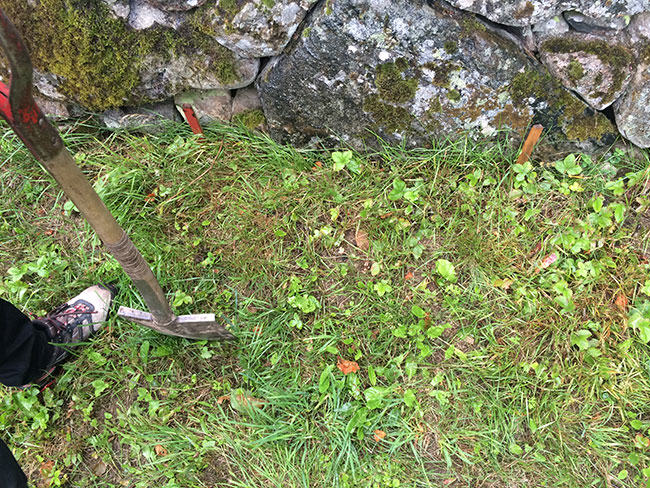
It only took a few seconds of digging to find the first piece of fake fur, which appeared to be fairly intact.

Finding the real fur was more of a challenge. We decided to dig by hand to avoid disturbing the site too much, and came across a sad-looking shred.

After refilling the grave, we put our exhumed samples onto a tray. It was time to have a closer look for signs of degradation.
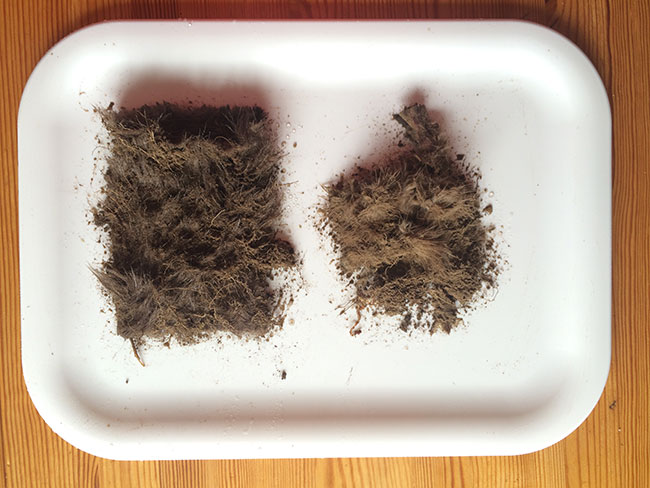
A lot of dirt was still attached to the samples, so a bit of gentle cleaning was in order. And here's what we ended up with:
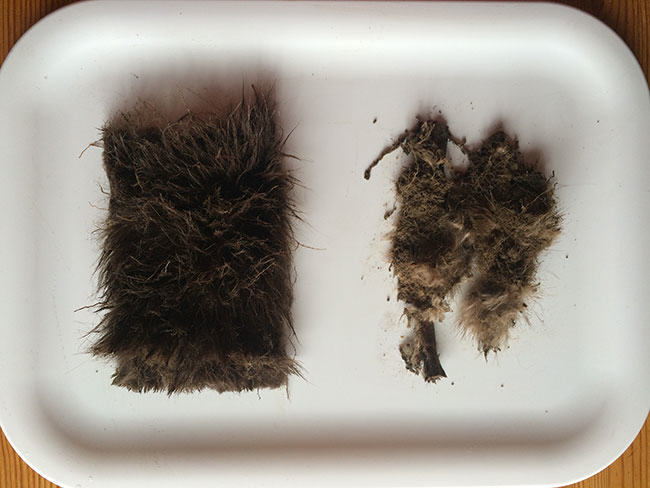
Ocular inspection immediately told us that the two samples, which were originally the same size, were not the same size anymore. The real fur sample was much smaller.
Closer inspection revealed that the synthetic fur was pretty much intact, front and back.
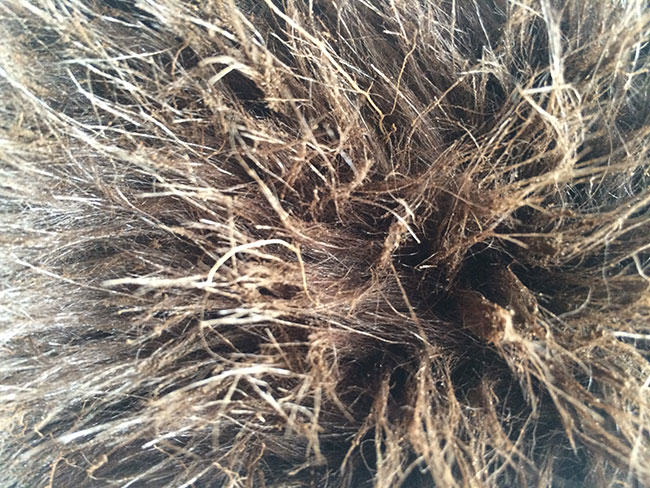

The real fur, on the other hand, was falling to pieces, and was held together by the threads from the letting-out sewing process. The leather had all but disappeared and most of the hairs showed clear signs of biodegradation.
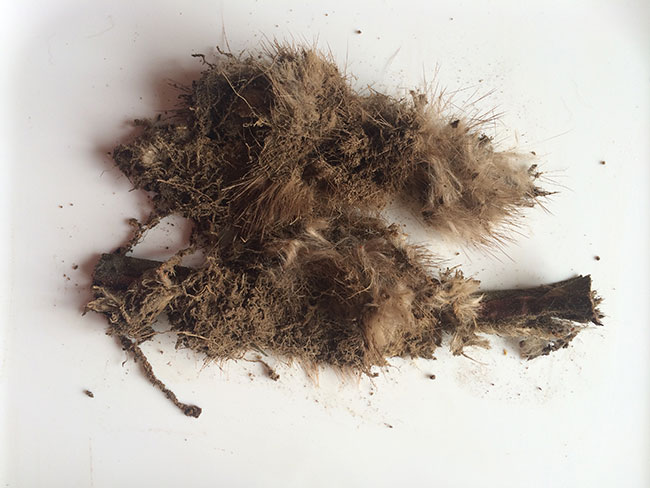
We're only three months into a multi-year experiment, and already the findings are quite dramatic.
Equal-sized pieces of fake and real fur were buried side by side. After three months, the fake fur showed no obvious signs of degradation, biological or otherwise. In other words, it was perfectly intact. The real fur, however, was in an advanced state of degradation, in particular the leather.
Like all good scientists, we'll hold back on making conclusions until the experiment has run its course. But the way things are headed, it might not be long before we're using tweezers and a magnifying glass to find a real fur sample. It will all then be down to the fake fur samples. Will they degrade in five years? Or by the end of time?
Read the other installments of this experiment:
The Great Fur Burial, Part 1: Burial
The Great Fur Burial, Part 3: After Six Months
The Great Fur Burial, Part 4: After One Year
SEE ALSO: New study compares natural and fake fur biodegradability. Conducted by Organic Waste Systems, Ghent, Belgium; commissioned by the International Fur Federation and Fur Europe, 2018.
Are you interested in studying fur design and learning the technical skills involved in producing fur garments and home accessories?…
Read More
Are you interested in studying fur design and learning the technical skills involved in producing fur garments and home accessories? There are only a handful of courses around the world that teach these skills, and one of them is in the north of Finland.
The first thing that caught my eye when I walked into the fur design studio at Centria University of Applied Sciences were the fox pelts. Everywhere. Scraps of fox in boxes, coloured fox pieces being sewn into garments, rails of fox clothes, and the pièce de résistance, a multi-coloured fox beanbag chair (to die for would be an understatement here).
But then again, what would you expect when taking a fur design course in the country famed for its fox pelts?
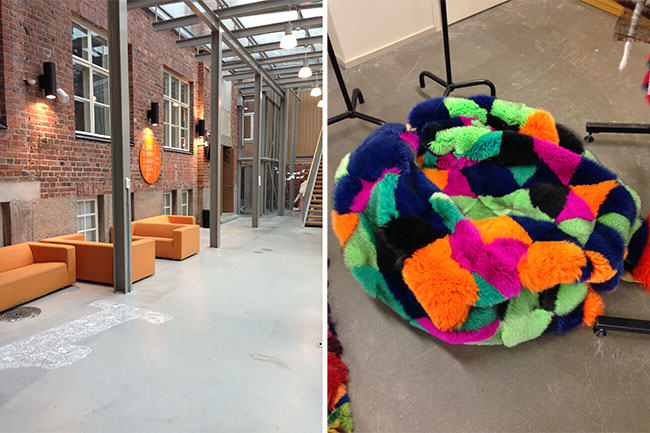
While it may seem remote, Pietarsaari, a town with a population of just 20,000, is a great place to study fur design. This is the epicenter of Finland’s fox farming industry, and it helps to have great resources nearby.
The Center for Fur Design is situated in the Allegro campus of the Centria University of Applied Sciences, in the town centre of Pietarsaari. It offers a Bachelor of Business Administration with a specialisation in fur design and marketing.

The curriculum features courses in handling fur, the properties of the raw material, as well as design and construction of products made from fur and leather. With close relationships and proximity to many fox farms, students are able to learn about the farming and access a great deal of very beautiful raw materials. On the business side, they will learn business, economics, management, and communication skills.

In addition to the degree course, Centria University of Applied Science also runs the FutureFOXstudio, an initiative that serves the fur trade, including companies, designers, teachers, and students. They offer creative workshops, product development services, international marketing, and tailored modules on fur design and related topics.
Are you interested in mastering the skills of fur design and business administration? The bachelors lasts three and a half years. And while you might find yourself a bit isolated that far north in Finland, rest assured you’ll be in good company. There are plenty of fox farms in the neighbourhood.
